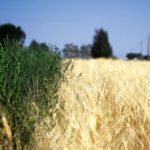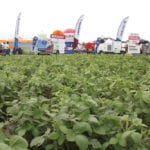
Features

Meet your farming neighbours: The Wagar family
This is the story of Craig and Janine Wagar and their farm near Rosetown

Nutrien Ag Solutions offers new digital platform
Customers can access agronomy, business information and past purchases online

Four new flax varieties for 2019
Flax varietal research is backed by a strong breeding program at the CDC

Crop advisor’s casebook: What’s causing the half-circle pattern in this wheat field?
A Crop Advisor's Solution from the November 6, 2018 issue of Grainews

Dealing with soybean aphids and cutworms
Hot, dry summer weather can bring soybean aphids into your fields

Herbicide diversity tackles kochia
As the weed works hard to outmanoeuvre chemicals, farmers expand the toolbox

Have your kochia tested for resistance
Keeping this weed in check required a multi-pronged management approach

Untangling C3 and C4 plants
What is the difference between these two plant types, and how does it affect the Prairies?

Merging into Corteva
Dow and Dupont products will be sold by Corteva, but branded as Brevant

Farm debt in Western Canada
Our debt levels are increasing, but our debt-to-equity ratios are holding steady


